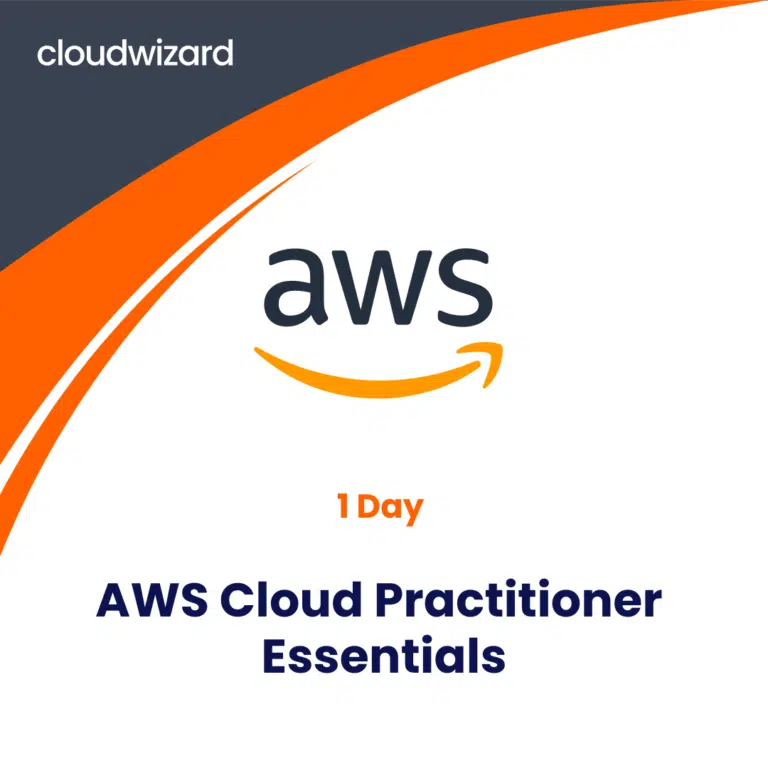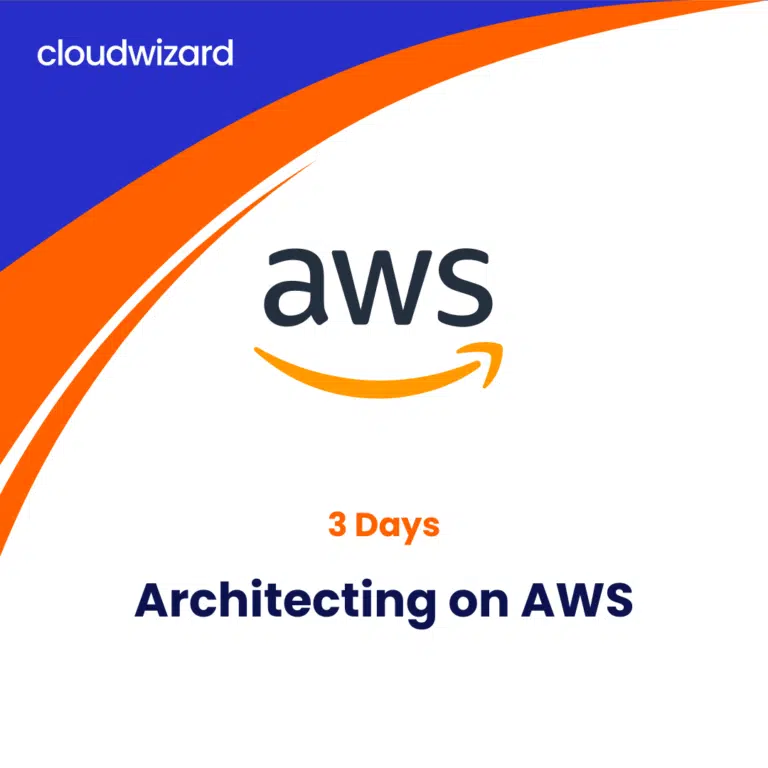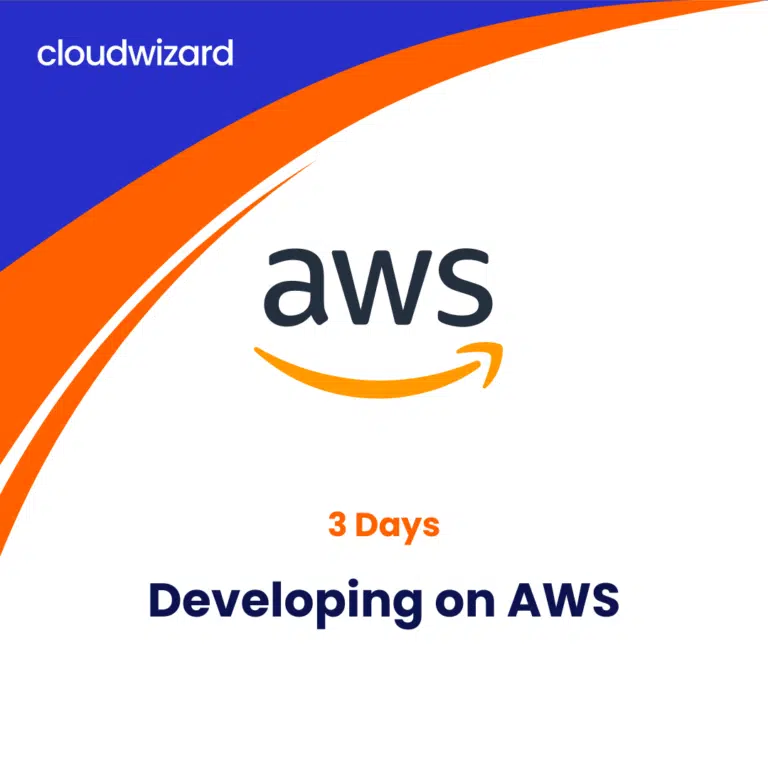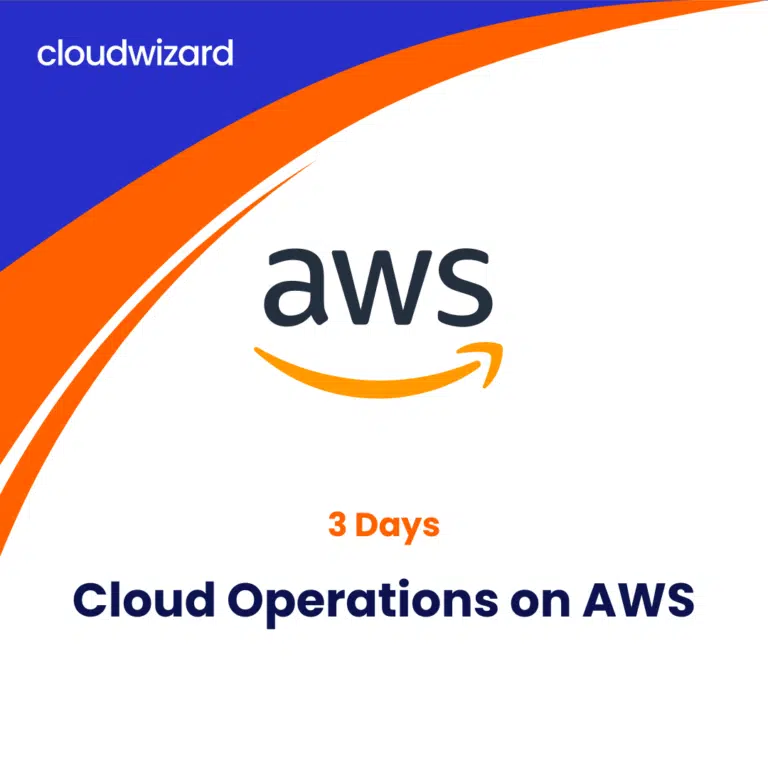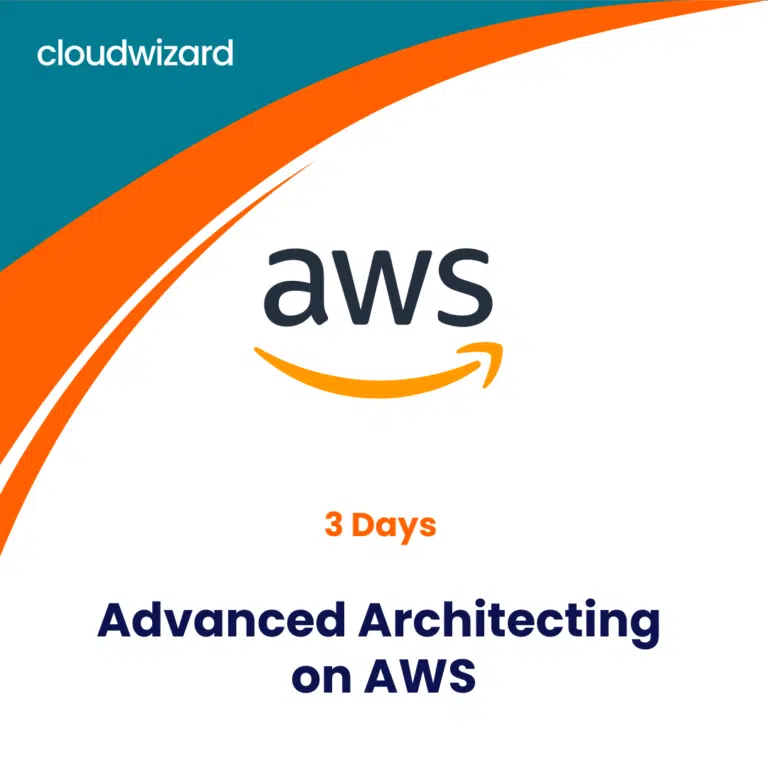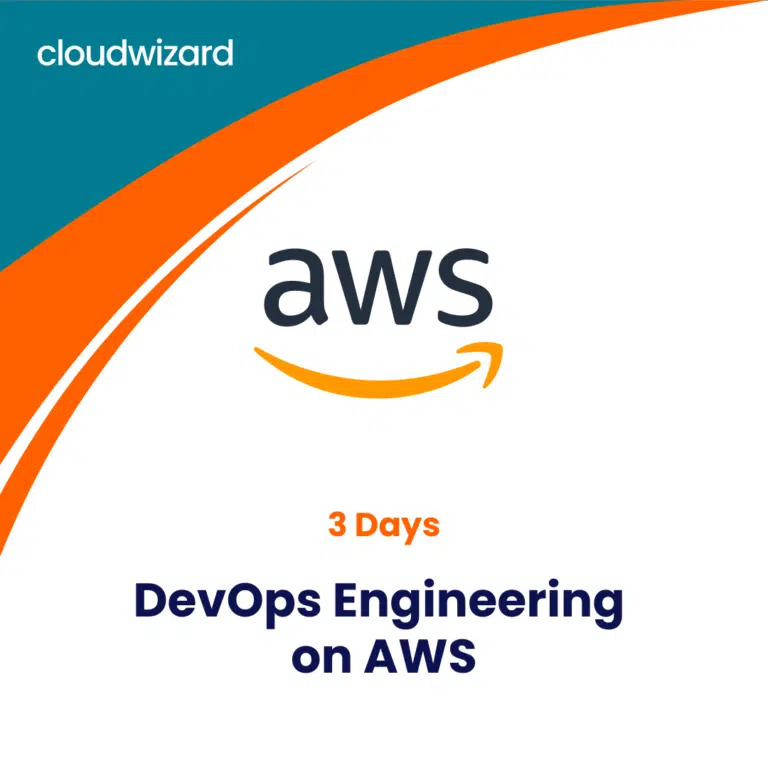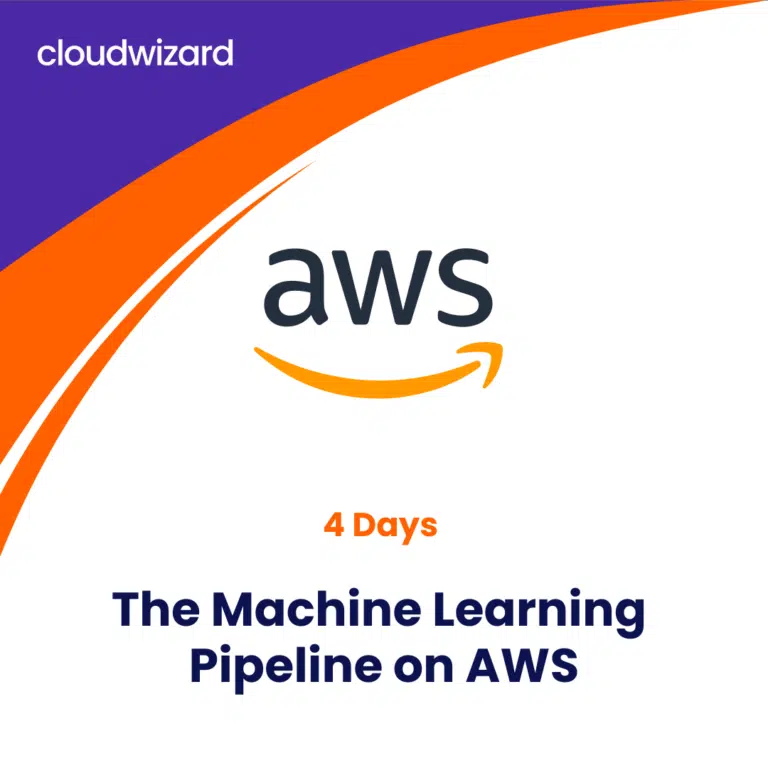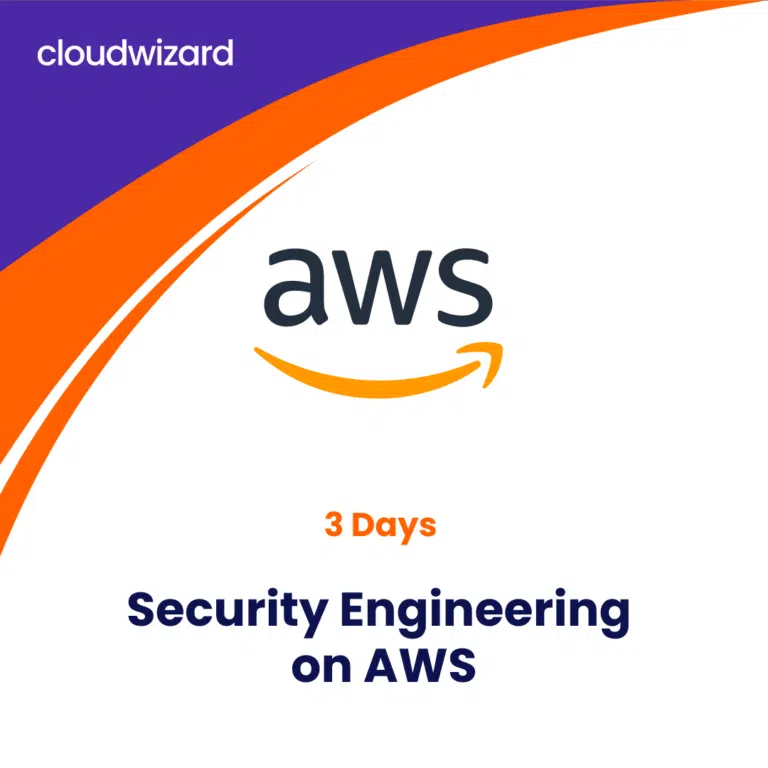Data Warehousing on AWS
You will be introduced to concepts, strategies and best practices for designing cloud-based data warehousing solutions using Amazon RedShift. The course also teaches you how to collect, store and analyze data for the data warehouse by using AWS services such as Amazon DynamoDB, Amazon EMR, Amazon Kinesis and Amazon S3. Additionally, you will learn to use Amazon QuickSight to perform analysis on your data
The course is recommended for Database Architects, Database Administrators, Database Developers, Data Analysts and Data Scientists. We also recommend that the attendees should have taken the AWS Technical Essentials course and have familiarity with relational databases and database design concepts
The course is delivered by an experienced AWS Instructor with a mix of theory, hands-on labs and presentations
3 Days / 24 Hours
Live Class
Certificate on completion
You will learn about the following
- Talk about the fundamental principles of data warehousing and how big data solutions and data warehousing connect.
- Launch an Amazon Redshift cluster and construct a cloud data warehouse using its components, features, and capabilities.
- Contribute to the data warehousing solution by leveraging other AWS data and analytical services, such as Amazon DynamoDB, Amazon EMR, Amazon Kinesis, and Amazon S3.
- The data warehouse’s design
- Recognize performance problems, improve queries, and tune the database for improved performance.
- To analyze data directly from an Amazon S3 bucket, utilize Amazon Redshift Spectrum.
- Perform data analysis and visualization tasks against the data warehouse using Amazon QuickSight.
What experience you need
- Taken AWS Technical Essentials (or equivalent experience with AWS)
- Knowledge of relational databases and database design concepts
Who should take this course
- Database Architects
- Database Administrators
- Database Developers
- Data Analysts
- Data Scientists
Module 1: Introduction to Data Warehousing
- Relational databases
- Data warehousing concepts
- The intersection of data warehousing and big data
- Overview of data management in AWS
- Hands-on lab 1: Introduction to Amazon Redshift
Module 2: Introduction to Amazon Redshift
- Conceptual overview
- Real-world use cases
- Hands-on lab 2: Launching an Amazon Redshift cluster
Module 3: Launching clusters
- Building the cluster
- Connecting to the cluster
- Controlling access
- Database security
- Load data
- Hands-on lab 3: Optimizing database schemas
Module 4: Designing the database schema
- Schemas and data types
- Columnar compression
- Data distribution styles
- Data sorting methods
Module 5: Identifying data sources
- Data sources overview
- Amazon S3
- Amazon DynamoDB
- Amazon EMR
- Amazon Kinesis Data Firehose
- AWS Lambda Database Loader for Amazon Redshift
- Hands-on lab 4: Loading real-time data into an Amazon Redshift database
Module 6: Loading data
- Preparing Data
- Loading data using COPY
- Maintaining tables
- Concurrent write operations
- Troubleshooting load issues
- Hands-on lab 5: Loading data with the COPY command
Module 7: Writing queries and tuning for performance
- Amazon Redshift SQL
- User-Defined Functions (UDFs)
- Factors that affect query performance
- The EXPLAIN command and query plans
- Workload Management (WLM)
- Hands-on lab 6: Configuring workload management
Module 8: Amazon Redshift Spectrum
- Amazon Redshift Spectrum
- Configuring data for Amazon Redshift Spectrum
- Amazon Redshift Spectrum Queries
- Hands-on lab 7: Using Amazon Redshift Spectrum
Module 9: Maintaining clusters
- Audit logging
- Performance monitoring
- Events and notifications
- Lab 8: Auditing and monitoring clusters
- Resizing clusters
- Backing up and restoring clusters
- Resource tagging and limits and constraints
- Hands-on lab 9: Backing up, restoring and resizing clusters
Module 10: Analyzing and visualizing data
- Power of visualizations
- Building dashboards
- Amazon QuickSight editions and features
Talk to a Learning Advisor
Popular AWS Courses
FAQs
To enroll in this course, choose the starting date and make an online payment. Once your payment is confirmed, our team will reach out to you.
You may reach out at the contact number listed on our official website or write us at info@cloudwizardconsulting.com
Wire Transfer, Credit Card, Debit Card, UPI & Purchase Order.
There is no minimum number of candidates required, we are happy to train 1 to 1 . With regards to the maximum number, we can accomodate 30 learners in one batch.
- Training Delivered by an Amazon Authorized Instructor.
- AWS Content E-Kit
- Hands-on-labs for 30 days
- Class attendance certificate
You will get the access to course content & lab on first day of your training session.
The course Completion Certificate will be issued to your email id within 2 weeks of completing your course.
A one-day course could be delivered over two half day sessions (4 hours a day), or a three-day course could be delivered over five days (4 hours a day)
MOBILE LAYOUT
Data Warehousing on AWS
3 Days / 24 Hours
Live Class
Certificate on completion
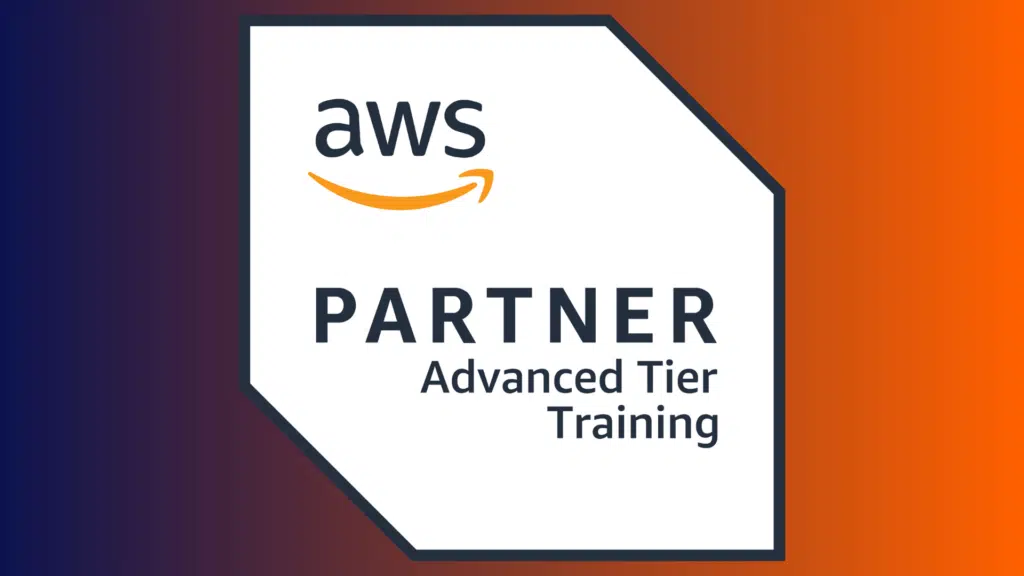
Objectives
Here’s what you’ll learn in this course:
- Talk about the fundamental principles of data warehousing and how big data solutions and data warehousing connect.
- Launch an Amazon Redshift cluster and construct a cloud data warehouse using its components, features, and capabilities.
- Contribute to the data warehousing solution by leveraging other AWS data and analytical services, such as Amazon DynamoDB, Amazon EMR, Amazon Kinesis, and Amazon S3.
- The data warehouse’s design
- Recognize performance problems, improve queries, and tune the database for improved performance.
- To analyze data directly from an Amazon S3 bucket, utilize Amazon Redshift Spectrum.
- Perform data analysis and visualization tasks against the data warehouse using Amazon QuickSight.
Prerequisites
We recommend that attendees of this course have:
- Taken AWS Technical Essentials (or equivalent experience with AWS)
- Knowledge of relational databases and database design concepts
Intendend Audience
You can take on this course if you belong to the following category of individuals:
- Database Architects
- Database Administrators
- Database Developers
- Data Analysts
- Data Scientists
Module Breakdown
Module 1: Introduction to Data Warehousing
- Relational databases
- Data warehousing concepts
- The intersection of data warehousing and big data
- Overview of data management in AWS
- Hands-on lab 1: Introduction to Amazon Redshift
Module 2: Introduction to Amazon Redshift
- Conceptual overview
- Real-world use cases
- Hands-on lab 2: Launching an Amazon Redshift cluster
Module 3: Launching clusters
- Building the cluster
- Connecting to the cluster
- Controlling access
- Database security
- Load data
- Hands-on lab 3: Optimizing database schemas
Module 4: Designing the database schema
- Schemas and data types
- Columnar compression
- Data distribution styles
- Data sorting methods
Module 5: Identifying data sources
- Data sources overview
- Amazon S3
- Amazon DynamoDB
- Amazon EMR
- Amazon Kinesis Data Firehose
- AWS Lambda Database Loader for Amazon Redshift
- Hands-on lab 4: Loading real-time data into an Amazon Redshift database
Module 6: Loading data
- Preparing Data
- Loading data using COPY
- Maintaining tables
- Concurrent write operations
- Troubleshooting load issues
- Hands-on lab 5: Loading data with the COPY command
Module 7: Writing queries and tuning for performance
- Amazon Redshift SQL
- User-Defined Functions (UDFs)
- Factors that affect query performance
- The EXPLAIN command and query plans
- Workload Management (WLM)
- Hands-on lab 6: Configuring workload management
Module 8: Amazon Redshift Spectrum
- Amazon Redshift Spectrum
- Configuring data for Amazon Redshift Spectrum
- Amazon Redshift Spectrum Queries
- Hands-on lab 7: Using Amazon Redshift Spectrum
Module 9: Maintaining clusters
- Audit logging
- Performance monitoring
- Events and notifications
- Lab 8: Auditing and monitoring clusters
- Resizing clusters
- Backing up and restoring clusters
- Resource tagging and limits and constraints
- Hands-on lab 9: Backing up, restoring and resizing clusters
Module 10: Analyzing and visualizing data
- Power of visualizations
- Building dashboards
- Amazon QuickSight editions and features
Talk to a Learning Advisor
Tablet View
Popular AWS Courses
FAQs
To enroll in this course, choose the starting date and make an online payment. Once your payment is confirmed, our team will reach out to you.
You may reach out at the contact number listed on our official website or write us at info@cloudwizardconsulting.com
Wire Transfer, Credit Card, Debit Card, UPI & Purchase Order.
There is no minimum number of candidates required, we are happy to train 1 to 1 . With regards to the maximum number, we can accomodate 30 learners in one batch.
- Training Delivered by an Amazon Authorized Instructor.
- AWS Content E-Kit
- Hands-on-labs for 30 days
- Class attendance certificate
You will get the access to course content & lab on first day of your training session.
The course Completion Certificate will be issued to your email id within 2 weeks of completing your course.
A one-day course could be delivered over two half day sessions (4 hours a day), or a three-day course could be delivered over five days (4 hours a day)
Data Warehousing on AWS
You will be introduced to concepts, strategies and best practices for designing cloud-based data warehousing solutions using Amazon RedShift. The course also teaches you how to collect, store and analyze data for the data warehouse by using AWS services such as Amazon DynamoDB, Amazon EMR, Amazon Kinesis and Amazon S3. Additionally, you will learn to use Amazon QuickSight to perform analysis on your data
The course is recommended for Database Architects, Database Administrators, Database Developers, Data Analysts and Data Scientists. We also recommend that the attendees should have taken the AWS Technical Essentials course and have familiarity with relational databases and database design concepts
The course is delivered by an experienced AWS Instructor with a mix of theory, hands-on labs and presentations
3 Days / 24 Hours
Live Class
Certificate on completion
Objectives
Here’s what you’ll learn in this course:
- Talk about the fundamental principles of data warehousing and how big data solutions and data warehousing connect.
- Launch an Amazon Redshift cluster and construct a cloud data warehouse using its components, features, and capabilities.
- Contribute to the data warehousing solution by leveraging other AWS data and analytical services, such as Amazon DynamoDB, Amazon EMR, Amazon Kinesis, and Amazon S3.
- The data warehouse’s design
- Recognize performance problems, improve queries, and tune the database for improved performance.
- To analyze data directly from an Amazon S3 bucket, utilize Amazon Redshift Spectrum.
- Perform data analysis and visualization tasks against the data warehouse using Amazon QuickSight.
Prerequisites
We recommend that attendees of this course have:
- Taken AWS Technical Essentials (or equivalent experience with AWS)
- Knowledge of relational databases and database design concepts
Intended Audience
You can take on this course if you belong to the following category of individuals:
- Database Architects
- Database Administrators
- Database Developers
- Data Analysts
- Data Scientists
Module 1: Introduction to Data Warehousing
- Relational databases
- Data warehousing concepts
- The intersection of data warehousing and big data
- Overview of data management in AWS
- Hands-on lab 1: Introduction to Amazon Redshift
Module 2: Introduction to Amazon Redshift
- Conceptual overview
- Real-world use cases
- Hands-on lab 2: Launching an Amazon Redshift cluster
Module 3: Launching clusters
- Building the cluster
- Connecting to the cluster
- Controlling access
- Database security
- Load data
- Hands-on lab 3: Optimizing database schemas
Module 4: Designing the database schema
- Schemas and data types
- Columnar compression
- Data distribution styles
- Data sorting methods
Module 5: Identifying data sources
- Data sources overview
- Amazon S3
- Amazon DynamoDB
- Amazon EMR
- Amazon Kinesis Data Firehose
- AWS Lambda Database Loader for Amazon Redshift
- Hands-on lab 4: Loading real-time data into an Amazon Redshift database
Module 6: Loading data
- Preparing Data
- Loading data using COPY
- Maintaining tables
- Concurrent write operations
- Troubleshooting load issues
- Hands-on lab 5: Loading data with the COPY command
Module 7: Writing queries and tuning for performance
- Amazon Redshift SQL
- User-Defined Functions (UDFs)
- Factors that affect query performance
- The EXPLAIN command and query plans
- Workload Management (WLM)
- Hands-on lab 6: Configuring workload management
Module 8: Amazon Redshift Spectrum
- Amazon Redshift Spectrum
- Configuring data for Amazon Redshift Spectrum
- Amazon Redshift Spectrum Queries
- Hands-on lab 7: Using Amazon Redshift Spectrum
Module 9: Maintaining clusters
- Audit logging
- Performance monitoring
- Events and notifications
- Lab 8: Auditing and monitoring clusters
- Resizing clusters
- Backing up and restoring clusters
- Resource tagging and limits and constraints
- Hands-on lab 9: Backing up, restoring and resizing clusters
Module 10: Analyzing and visualizing data
- Power of visualizations
- Building dashboards
- Amazon QuickSight editions and features
Talk to a Learning Advisor
FAQs
Yes, we are an AWS Advanced Tier Training Partner
Anyone who wants to start a profession in AWS cloud is fit to enroll in this course. No prior knowledge of coding or other technical skills is required.
To enroll in this course, choose the starting date and make an online payment. Once your payment is confirmed, our team will reach out to you.
You may reach out at the contact number listed on our official website or write to us at info@cloudwizard.wpenginepowered.com.
Wire Transfer, Credit Card, Debit Card, UPI & Purchase Order
There is no minimum number of candidates required, we are happy to train 1 to 1 should you wish. With regard to the maximum number, we can accommodate 30 learners in one batch.
1. Training delivered by an Amazon Authorised Instructor
2. AWS Content E-Kit
3. Hands-on labs- 30 days
4. Class attendance certificate
You will get the access to course content & lab on first day of your training session.
The course completion certificate will be issued to your email id within 2 weeks of completing your course.
A one-day course could be delivered over two half day sessions (4 hours a day), or a three-day course could be delivered over five days (4 hours a day).


